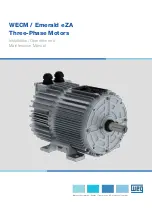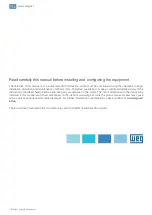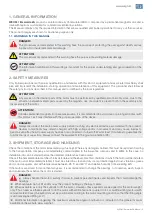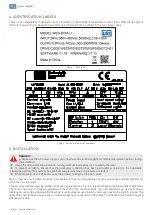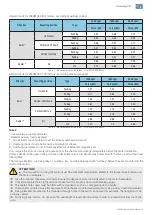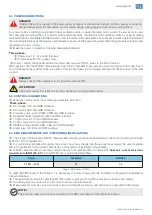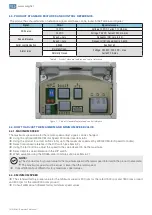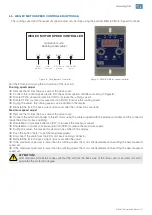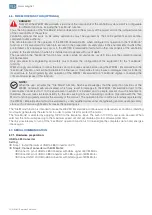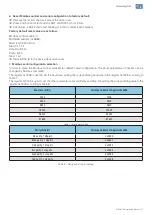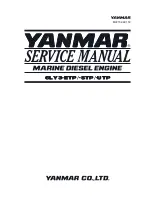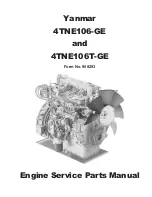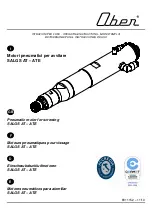
www.weg.net
WECM / Emerald eZA Manual | 5
Allowed loads for WECM (IEC 80) motors, according maximum speed:
Direction
Mounting position
Type
1500 rpm
1800 rpm
3000 rpm
Force (kN)
Force (kN)
Force (kN)
Axial
1)
Horizontal
Pushing
0.90
0.86
0.74
Pulling
0.50
0.46
0.34
Vertical shaft down
Pushing
0.96
0,91
0.77
Pulling
0.47
0.44
0.33
Vertical shaft up
Pushing
0.87
0.84
0.73
Pulling
0.56
0.51
0.37
Radial
2)
All
L
0.66
0.61
0.49
L/2
0.74
0.69
0.56
Table 1 - Maximum permissible thrust - Fr in (kN) 20000 hours
Allowed loads for WECM (IEC 100) motors, according maximum speed:
Direction
Mounting position
Type
1500 rpm
1800 rpm
3000 rpm
Force (kN)
Force (kN)
Force (kN)
Axial
1)
Horizontal
Pushing
1.31
1.25
1.10
Pulling
0.71
0.65
0.50
Vertical shaft down
Pushing
1.46
1.37
1.18
Pulling
0.62
0.58
0.45
Vertical shaft up
Pushing
1.22
1.18
1.05
Pulling
0.86
0.76
0.58
Radial
2)
All
L
0.96
0.88
0.74
L/2
1.07
1.0
0.85
Table 2 - Maximum permissible thrust - Fr in (kN) 20000 hours
Notes:
1)
Axial maximum load (radial zero).
2)
Radial maximum load (axial zero).
1 - All belt loads are considered to act in vertically downward direction.
2 - Overhung loads include belt tension and weight of sheave.
3 - Overhung load limits do not include any effect of unbalanced magnetic pull.
Only remove the corrosion protection grease from the shaft end and flange immediately before the motor installation.
Unless specified otherwise in the purchase order, WEG motors are dynamically balanced with “half key” and without load
(uncoupled).
The driving elements, such as pulleys, couplings, etc., must be balanced with “half key” before they are mounted on the
shaft of the motors.
ATTENTION!
g
The air used for cooling the motor must be at ambient temperature, limited to the temperature indicated on
the motor nameplate;
Take the required measures in order to ensure the degree of protection indicated on the motor nameplate:
Unused cable inlet holes in the terminal boxes must be properly closed with blanking plugs;
The cable entries used must be fitted with components, such as, cable glands and conduits;
Components supplied loose (for example, terminal boxes mounted separately) must be properly closed and sealed;
Fixing elements mounted in the threaded through holes in the motor enclosure (for example, the flange) must be
properly sealed.
For flying leads motors, do not push the overlength of leads into the motor in order to prevent that they touch the
rotor.

